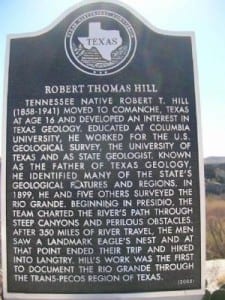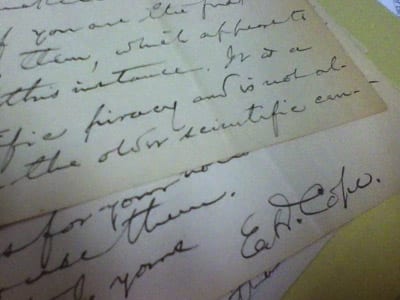Never-Before-Seen Fossils From Angola Bring a Strange Yet Familiar Ocean Into View
The Smithsonian’s National Museum of Natural History will open a new exhibition Nov. 9, 2018 revealing how millions of years ago, large-scale natural forces created the conditions for real-life sea monsters to thrive in the South Atlantic Ocean basin shortly after it formed. “Sea Monsters Unearthed: Life in Angola’s Ancient Seas” will offer visitors the opportunity to dive into Cretaceous Angola’s cool coastal waters, examine the fossils of striking marine reptiles that once lived there and learn about the forces that continue to mold life in the ocean and on land.
Over 134 million years ago, the South Atlantic Ocean basin did not yet exist. Africa and South America were one contiguous landmass on the verge of separating. As the two continents drifted apart, an entirely new marine environment — the South Atlantic — emerged in the vast space created between them. This newly formed ocean basin would soon be colonized by a dizzying array of ferocious predators and an abundance of other lifeforms seizing the opportunity presented by a new ocean habitat.
“Because of our planet’s ever-shifting geology, Angola’s coastal cliffs contain the fossil remains of marine creatures from the prehistoric South Atlantic,” said Kirk Johnson, the Sant Director of the museum. “We are honored by the generosity of the Angolan people for sharing a window into this part of the Earth’s unfolding story with our visitors.”
For the first time, Angolan fossils of colossal Cretaceous marine reptiles will be on public display. Through Projecto PaleoAngola — a collaboration between Angolan, American, Portuguese and Dutch researchers focused on Angola’s rich fossil history — paleontologists excavated and studied these fossils, which were then prepared for the exhibition by a team of scientists and students at Southern Methodist University (SMU) in Dallas. The exhibition was made possible by the Sant Ocean Hall Endowment Fund.
“Fossils tell us about the life that once lived on Earth, and how the environments that came before us evolve over time,” said Louis Jacobs, professor emeritus of paleontology at SMU and collaborating curator for the exhibition. “Our planet has been running natural experiments on what shapes environments, and thereby life, for millions of years. If it weren’t for the fossil record, we wouldn’t understand what drives the story of life on our planet.”
The exhibition will immerse visitors in this Cretaceous environment with lively animations and vivid paleoart murals of life beneath the waves — courtesy of natural history artist Karen Carr — that bring to life 11 authentic fossils from Angola’s ancient seas, full-size fossil reconstructions of a mosasaur and an ancient sea turtle, as well as 3-D scanned replicas of mosasaur skulls. Photomurals and video vignettes will transport visitors to field sites along Angola’s modern rugged coast, where Projecto PaleoAngola scientists unearth the fossil remains from this lost world.
A Strange but Familiar Ocean
“Sea Monsters Unearthed” paints the picture of a flourishing ocean environment that in some ways will look strange to modern eyes, yet still bears striking similarities to today’s marine ecosystems.
Peculiar plesiosaurs — massive reptiles with long necks, stout bodies and four large flippers — swam alongside 27-foot-long toothy marine lizards called mosasaurs and more familiar creatures like sea turtles. From surprising mosasaur stomach contents to the one of the oldest known sea turtles found in Africa, fossils and reconstructions of these species will offer visitors a fuller picture of their remarkable life histories and the ecosystems they were a part of.
The exhibition will also explore deeper similarities across the ecology and anatomy of ocean animals then and now. After the marine reptiles that dominated these waters went extinct 66 million years ago, modern marine mammals would not only later replace them as top predators in the world’s ocean, but also converge on many of the same body shapes and survival strategies.
The Forces That Shape Life, Then and Now
This unique period in Earth’s history reveals how key geologic and environmental forces contributed to the early establishment and evolution of life in the South Atlantic. As Africa and South America drifted apart and a new ocean basin formed, trade winds blowing along the new Angolan coastline created the conditions for upwelling, an ocean process that drives the circulation of nutrients from the deep ocean to its surface. These nutrients in turn jump-started the food web that attracted the ferocious marine reptile predators featured throughout the exhibition.
Just as tectonic forces helped create this Cretaceous marine environment, they also shaped the arid coastal cliffs where the fossils are found today. Starting 45,000 years ago, a geologic process called uplift caused Earth’s crust to bulge along Angola’s coast, lifting part of the seafloor out of the water — and along with it, the layers upon layers of fossil-filled rocks where Projecto PaleoAngola scientists work.
Though humans do not operate on a tectonic scale, their actions also have major impacts on ocean life. Humans are now the ocean’s top predators, with one-fifth of the world’s population relying on food from upwelling-based ecosystems. Scientists caution that with such great pressure on modern upwelling-based fisheries, overfishing could change the future of life in the ocean by threatening fish populations, marine ecosystems and even human health. — National Museum of Natural History
About the National Museum of Natural History
The National Museum of Natural History is connecting people everywhere with Earth’s unfolding story. The museum is one of the most visited natural history museums in the world with approximately 7 million annual visitors from the U.S. and around the world. Opened in 1910, the museum is dedicated to maintaining and preserving the world’s most extensive collection of natural history specimens and human artifacts. It is open daily from 10 a.m. to 5:30 p.m. (closed Dec. 25). Admission is free. For more information, visit the museum on its website and on Facebook and Twitter.





 SMU geothermal scientist Maria Richards to guide global energy organization
SMU geothermal scientist Maria Richards to guide global energy organization 17 million-year-old whale fossil provides 1st exact date for East Africa’s puzzling uplift
17 million-year-old whale fossil provides 1st exact date for East Africa’s puzzling uplift SMU analysis of recent North Texas earthquake sequence reveals geologic fault, epicenters in Irving and West Dallas
SMU analysis of recent North Texas earthquake sequence reveals geologic fault, epicenters in Irving and West Dallas Bitcoin scams steal at least $11 million in virtual deposits from unsuspecting customers
Bitcoin scams steal at least $11 million in virtual deposits from unsuspecting customers Teen girls report less sexual victimization after virtual reality assertiveness training
Teen girls report less sexual victimization after virtual reality assertiveness training Women who are told men desire women with larger bodies are happier with their weight
Women who are told men desire women with larger bodies are happier with their weight Fossil supervolcano in Italian Alps may answer deep mysteries around active supervolcanoes
Fossil supervolcano in Italian Alps may answer deep mysteries around active supervolcanoes

 SMU contributes fossils, expertise to new Perot Museum in ongoing scientific collaboration
SMU contributes fossils, expertise to new Perot Museum in ongoing scientific collaboration 100 million-year-old coelacanth discovered in Texas is new fish species from Cretaceous
100 million-year-old coelacanth discovered in Texas is new fish species from Cretaceous Observed! SMU’s LHC physicists confirm new particle; Higgs ‘God particle’ opens new frontier of exploration
Observed! SMU’s LHC physicists confirm new particle; Higgs ‘God particle’ opens new frontier of exploration DOE Award: advancing SMU’s link to the God particle
DOE Award: advancing SMU’s link to the God particle